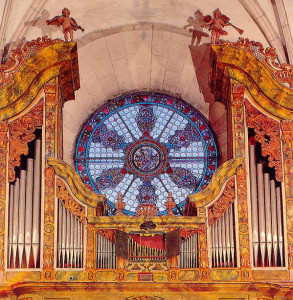
This is a hostorical heritage newly restored, located in a 16.th century Church in Sanzeno , about 8 km from Smarano.
One manual – Italian 14 key pedal.
Stop disposition is the following:
PRINCIPAL BASSO VOCE UMANA
PRINCIPAL / SOPRANO CORNETO / PRIMO
OTTAVA CORNETA
QUINTA / DECIMA FLAUTO OTTA/VA BASSO
DECIMA / NONA FLAUTO OTTA/VA SOPRANO
VIGESIMA / SECONDA FLAUTO IN / QUINTA
VIGESIMA / SESTA FLAUSOLE’
VIGESIMA / NONA TROMBE / PEDALI
TRIGESIMA / TERZA CONTRO BASSI
TRIGESIMA / SESTA OTTAVE DE / CONTROBASSI

Built for the Concert hall of the Smarano Academy, the organ has been made according to the style and mechanics of the the Renaissance historical instruments, with specific reference to the Antegnati tradition and, in general, of the contemporary instruments of the northern side of Italy; this both in terms of voicing, mechanics and construction styles.
Manual:
Principale (95% of tin) (8’, front pipes from Fa1 are 6’)
Ottava
Quintadecima
Decimanona (rit. Fa#4)
Vigesimaseconda (rit. Do#4)
Vigesimasesta (rit. Fa#3, Fa#4)
Vigesimanona (rit. Do#3, Do#4)
Flauto in Ottava
Flauto in Duodecima
Cornetta
Fiffaro (from Do#2)
Regale bassi
Regale soprani
Split bassi/soprani: ( Do3/Do#3)
Keyboard: 45 key (Do1-Do5) short octave,split keys (tasti enarmonici) for Mib2,3,4 e Sol#2,3
Pedal: 14 keys (Do1-Fa2) linked to manual keyboard.
Temperament: Meantone
Pitch: 440 Hz
Wind presure: 38 mm H2O
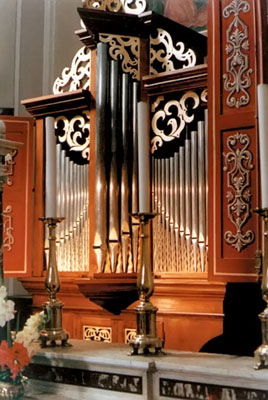
The instrument of S. Maria Assunta church in Smarano was built by the Organ builder Glauco Ghilardi from Lucca (Tuscany) in 1992.The organ is inspired by the Flemish models of XVI century in its phonetic and technical features.
The organ maker says: “Even though it isn’t a copy, the attempted operation is to synthesize, with stylistic rigor and personal creativity, elements and stimula derived from studies on an historical instrument and from playing experiences of literature from that period”. When the both appealing and disappointing hypothesis of an “omnibus” organ (suitable for all types of literature) was discarded, the organ builder thought at an instrument “aiming to Flemish and Northern German Literature of XVI and XVII centuries”, from the assumption that “a strongly characterized instrument doesn’t prevent from playing literatures that are different from the ones for which it was conceived”.
Features
Two Manuals. 51 keys (Do1-Re5)
Pedal. 27 keys (Do1-Re3)
Pressure 65 mm H2O
Diapason 440
Kellner Temperament
All pipes are 95% lead alloy made, except for Regale tubas, which are 70% tin alloy made.
Grand’organo (Manual I)
Principale 8 (P8)
Ottava 4 (O4)
Decimaseconda 2 2/3 bassi/soprani (D22/3)
Decimaquinta 2 (D2)
Terza 1 3/5 bassi/soprani (T11/35)
Decimanona 1 1/3 (D11/3)
Pieno a 3 file (PIII)
Flauto a cuspide 8 (F8)
Dulzian 8′
Positivo (Brust, manual II)
Vox Humana 8
Flauto a camino 4 (F4)
Flauto conico 2 (F2)
Quinta 1 1/3 (Q11/3)
Terza 3/5 (T3/5)
Pedale
Subbasso 16 (S16)
Flauto a cupide 8 [from O.W.] (F8)
Corno 4 (C4)
Trombone 16 (T16)
Couplers: II/I [played from II]; I/Ped; II/Ped
Tremolo
Usignolo
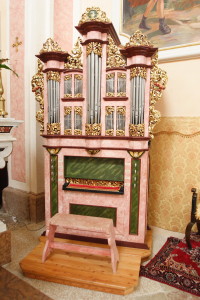
A positive Organ has been designed by Edoardo Bellotti and. Hans Davidsson and built by Janis Kalnins, from Latvia.
The instrument has been built acording to the baroque organ building tradition of the Baltic area g as copy of the historic 1701 organ in Ugale (Latvia) with some technical modification.
Features
Keyboard C – d³, cromatic.
Transposer from 415 – 440 – 465 Hz
Gedackt 8′ wood
Blockflojt 4′ wood,open
Nasard 3′ wood,open
Principal 2′ meantone
Principal 2′ (equabile)
Zincke 8′ , (reed)
Bird song…
Metal pipes are 60% tin and 40% led , wooden pipes are pine.
Pressure 72mm
Electric and manual bellows
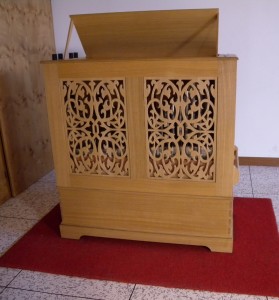
Features:
4 stops
Transposer 440/415 Hz
Unequal temperament
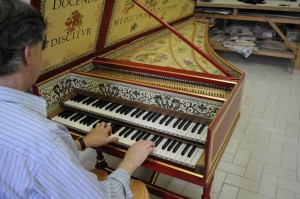
Features:
2 manuals
4 stop
Transposer
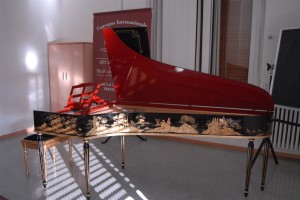
Features:
2 manuals
4 stop
Transposer 440/415 Hz
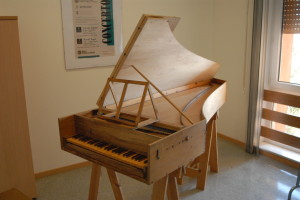
Features:
2 stop
Transposer[/toggle_item] [toggle_item title=”Italian harpsichord one keyboard – Granziera 1994″]
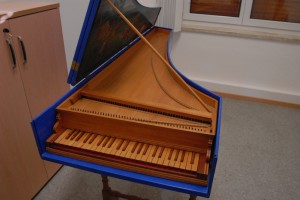 Feautures:
Feautures:2 stop
Transposer[/toggle_item] [toggle_item title=”Clavichord replica mod. Gerstenberg Leipzig 1766 – Go.Art Goteborg – 2008″]
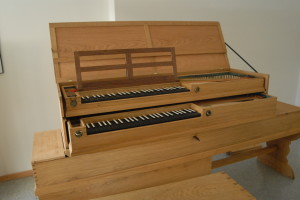
Features:
2 keyboard
4½ octave
Pedal[/toggle_item] [toggle_item title=”Clavichord 1996 – Replica Federici Go Art Goteborg”]
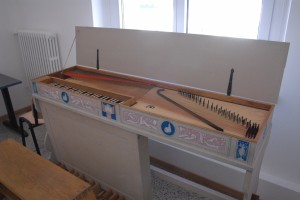
Features:
One keyboard
Pedal[/toggle_item] [toggle_item title=”Four Table clavichords”]
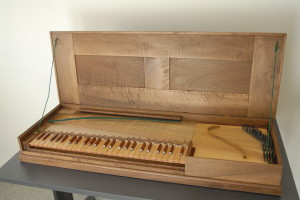 [/toggle_item]
[toggle_item title=”Fortepiano by Monika May (copy from Anton Walter)”]
[/toggle_item]
[toggle_item title=”Fortepiano by Monika May (copy from Anton Walter)”]
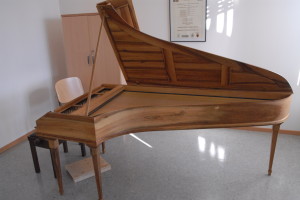 [/toggle_item]
[/toggle_box]
[/toggle_item]
[/toggle_box]
These instruments, except the Ghilardi and the Cimmino organs, are being located in the School in 12 new practising rooms.
